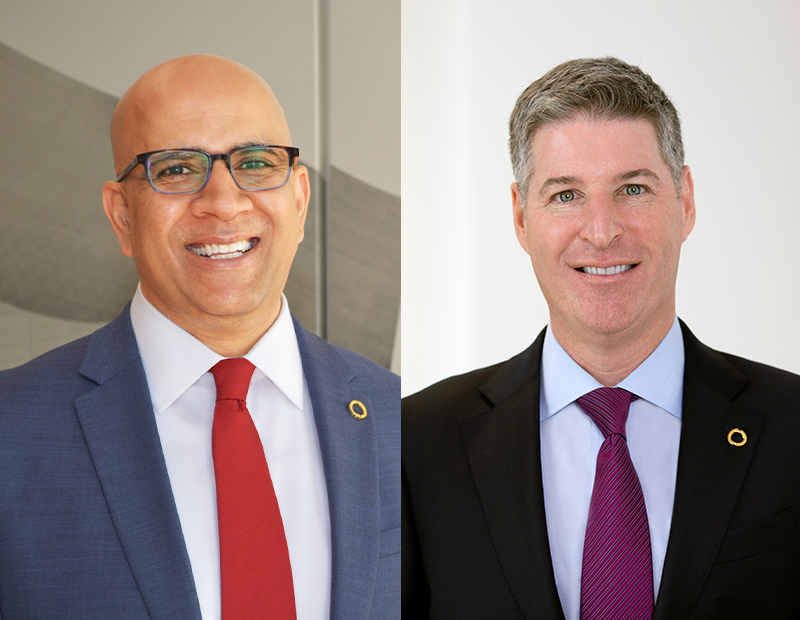Lending Trends in Southern California: Q&A
Banc of California’s Jared Wolff and Hamid Hussain on navigating turbulent times.
With a strong focus on client relationships, Banc of California’s approach to remaining active through the pandemic has been to reach out to borrowers to offer assistance and a reassuring voice, according to Jared Wolff, president & CEO.
As an active lender in the Southern California commercial real estate market, the bank provides acquisition, development and bridge loans. The recent economic uncertainty, however, has prompted changes. The lender has moved away from certain deals and has “shifted to more reliance on overall sponsor support,” said Hamid Hussain, president of real estate and commercial banking.
CPE spoke to the executives about where the capital markets in the region may be heading this year.
READ ALSO: Getting the Deal Done
Describe Banc of California’s overall strategy since the onset of the health crisis?
Wolff: Our focus has always been to listen to the needs of our clients and provide a consultative approach to help them build on their financial success. Since the onset of the pandemic, we have been very proactive in reaching out to our clients to ask how we can help, if for no reason other than to offer a reassuring voice and say that we will get through this together. I would quantify that as the biggest opportunity for us as a community bank during this crisis—to show that we care about our clients and want to help support the communities we serve.
What changes have you noticed in CRE lending activity across Southern California in recent months?
Hussain: In the banking industry as a whole, the biggest trend has been to reduce risk tolerance and move away particularly from the hardest-hit sectors of hospitality and retail. In the more stable sectors—like industrial and multifamily—we have seen an increased reliance on sponsor strength and liquidity when debt service and tenant quality are closer to the bare minimum of underwriting guidelines. The reduction of loan demand, however, due to decreased sales transaction volume as the pandemic has lingered, is causing some of these stricter lending standards and pricing to once again return closer to pre-pandemic levels.
How has the health crisis shifted the way you evaluate potential transactions?
Hussain: Our approach to credit fundamentals—cash flows, collateral and sponsorship—hasn’t and won’t change. Albeit, since the pandemic, we have shifted to more reliance on overall sponsor support. Sponsors are key to the success of any real estate investment and it is important for us to know the people we bank with. Going back to what Jared said earlier, we take a consultative approach to building relationships, so placing trust in our sponsors and vice versa is paramount to our mutual success.
In light of the current economic climate, what are your thoughts on adding extra layers of protection to a deal structure?
Wolff: Bankwide, we feel pretty good about our ability to assess risk, so, therefore, have not felt inclined to over-structure transactions even during the pandemic. We believe consistency and reliability are the hallmarks that build a good reputation. Our clients and prospects must be able to depend on the fact that the bank will be responsive and consistent in its execution.
Are you still seeing demand for construction financing?
Hussain: We have not seen significant demand for office construction projects, nor do we expect to. Office will remain under some pressure as companies allow increased flexibility for employees to work remotely. Industrial demand remains strong especially as online shopping transactions have increased. We are seeing more of our clients looking at infill industrial projects as “last-mile delivery” continues to grow.
From a big-picture perspective, what changes do you expect to be temporary and what will most likely be permanent in terms of lending in the office and industrial sectors?
Hussain: This is a difficult question to answer as human memories tend to be short, especially bankers’. Banc of California has not veered far off our pre-pandemic lending standards as they have served us well in real estate lending. Overall, the industry may take a more critical view of high-rise office buildings, but it is difficult to say if that will be a lasting trend. Industrial has become the new multifamily until we reach overbuilt status, but that is likely way down the road.
READ ALSO: Taking Stock of Office’s Future
How do you see the financial landscape in Southern California evolving in the upcoming months? How do you expect the various real estate sectors to perform in 2021?
Wolff: Southern California has an incredibly resilient economy due to the diversity of industries based here. Employment will be the key factor, especially in the entertainment sectors. But as a lifelong native of Los Angeles, I am a believer in Southern California. We as a bank are well-positioned given our capital strength to grow alongside the success of our clients.








You must be logged in to post a comment.